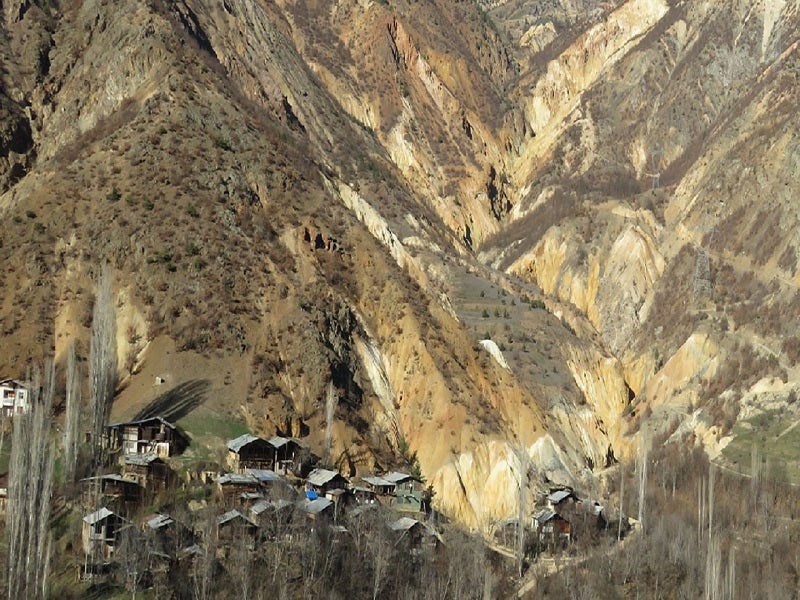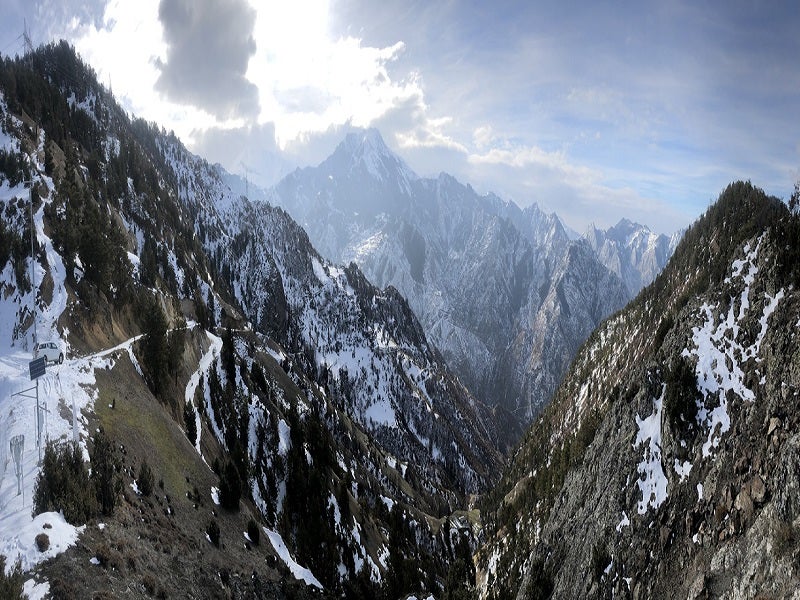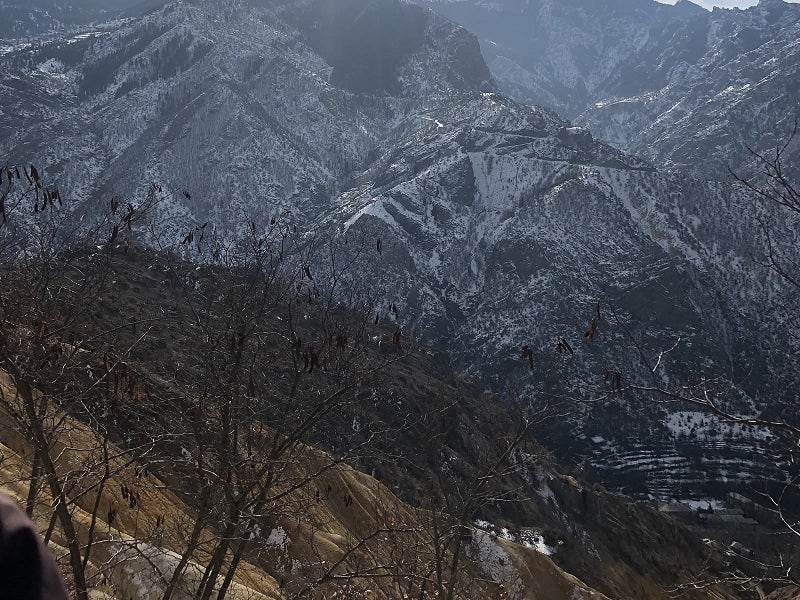The Hod Maden gold-copper project is an underground mining development located in Turkey.
A feasibility study for the project was completed in November 2021 and highlighted a mine life of 13 years and a development capital requirement of $309m. The ministry of environment and urbanisation of Turkey approved the environmental impact assessment (EIA) for the project in the same month.
The project was previously developed by Lidya Mines (70%) and Sandstorm Gold Royalties (30%). Horizon Copper acquired a 30% stake from Sandstorm Gold Royalties in August 2022.
SSR Mining, a metals and mining company based in Canada, announced a sales agreement with Lidya Mines to acquire a 40% stake and operatorship of the project in May 2023 for $270m. The agreement involves an upfront payment of $120m for a 10% stake. An additional $150m payment will be made in structured milestone payments for the remaining 30%.
The project will have a production capacity of 2.02 million ounces (Moz) of gold and 255 million pounds (Mlb) of copper over its mine life. A construction decision for the project is expected to be made in 2024, targeting commercial operations by 2027.
Location
The Hod Maden project is located in the Artvin province in north-eastern Turkey. It lies in close proximity to Yukarimaden village and 2km from Asagimaden.
Geology and mineralisation
The Hod Maden project is situated within the Eastern Pontides tectonic belt, on the eastern margin of a Cretaceous age volcanic stratigraphy which is host to several volcanogenic massive sulphide (VMS) deposits. The Hod Maden orebody has a north-south strike and comprises the main zone with the bulk of the orebody and the south zone with limited economic mineralisation.
Gold and copper mineralisation at Hod Maden is defined as a polymetallic sub-volcanic hydrothermal deposit formed between the epithermal and porphyry zones. The mineralisation occurs within andesitic breccias and dacitic tuffaceous sediments in the form of quartz-sulphide, haematite/jasper breccias, massive sulphides and pyrite-chalcopyrite.
Hod Maden gold-copper project reserves
The proven and probable mineral reserves at Hod Maden are estimated at 8.69Mt grading 8.8g/t gold and 1.5% copper and containing 2.4koz gold and 287Mlb copper, as of July 2020.
Mining methods
Hod Maden will be developed as an underground mining operation using transverse and longitudinal longhole stoping (LHS) and modified drift and fill (DAF).
The DAF mining method will be used in the upper sections of the deposit where ground conditions are poor. It will allow for high recovery while limiting exposure to these poor ground conditions.
The upper mine will consist of 171m of shaft and 36km of lateral development. Access to the mine will be via two 11.4m internal diameter shafts that will advance as each level is completed.
LHS mining method will be utilised in the lower sections of the mine in a primary/secondary sequence with paste backfill due to more competent ground conditions and flexibility of the method.
The lower mine will consist of 26km of lateral and 1.9km of vertical development. A portal at the north of the deposit will be used as access, while all development infrastructure will be located to the west and within the footwall of the deposit.
Mining will be carried out sequentially from the hanging wall to the footwall. The orebody is up to 60m wide, which allows for two stoping panels to be developed with approximately 30m width.
Processing
The processing plant for the mine will have a capacity of 800,000 tonnes per annum (tpa).
The run of mine ore will be crushed in a primary haw crusher. The crushed ore will be ground in a primary grinding circuit and pumped to a cluster of hydrocyclones.
Bulk flotation will be used to separate sulphide minerals from gangue when processing regular ore. The bulk rougher concentrate will be reground in the concentrate regrind circuit, while the bulk rougher tailings will be further classified and reground in the secondary grinding circuit.
The hydrocyclone overflow from the secondary mill will feed the bulk scavenger flotation circuit, while the underflow will be recycled to the secondary mill. The bulk scavenger concentrate will be cleaned in the bulk scavenger cleaner circuit to produce a bulk cleaner scavenger concentrate and pumped to the copper flotation circuit.
Copper sulphide minerals from pyrite ore will be separated by floating at an elevated pH to produce copper concentrate from the bulk rougher flotation stage. Gold-bearing pyrite concentrate will be produced from the bulk scavenger flotation stage.
The bulk rougher and scavenger concentrates will be subjected to differential flotation to produce a saleable copper concentrate, which will be ground in a stirred mill prior to copper roughing, scavenging flotation and three-stage cleaning. The resultant copper concentrate will be thickened and dewatered before storage.
Infrastructure
The Hod Maden project site is accessible from the city of Artvin and Erzurum via asphalt-covered highways to the main road junction along the Çoruh river reservoir, which leads to the site.
The power required for the project is proposed to be supplied by the Turkish Electricity Transmission Company. It will be supplied from a 154kV high-tension power line running near the project area.
Water will be sourced through a combination of reclaim from the tailings, underground inflows and surface de-watering wells.
Contractors involved
The feasibility report for the project was prepared by GR Engineering Services (GRES), AMC Consultants (AMC), Hacettepe Mineral Teknolojileri (HMT), Golder Associates, SRK Consulting, INR Muhendislik Muşavirlik and NewPro Consulting & Engineering Services (NewPro).
GRES, an engineering design and construction services company, was responsible for process design, infrastructure, cost estimates, and economic assessment.
AMC, a consultancy firm, was responsible for mineralisation and geology, deposit types, sampling methods, adjacent properties, mining geotechnical and mining components.
Sample selection, metallurgical test work management and test work interpretation works were completed by HMT, a consulting firm.
Golder Associates, an engineering and consulting firm, was responsible for designing the tailings storage facility.
Hydrology, hydrogeology and geochemistry studies were completed by SRK Consulting, a mining consultancy firm.
INR Muhendislik Musavirlik, a Turkish engineering company, was engaged for the waste dump design, surface water management, site roads design and site tunnel design.
NewPro, a consulting and engineering services provider, was responsible for environmental studies, permissions and community impact components of the project.






